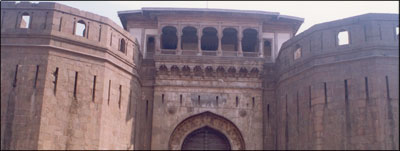 |
 |
| |
A Deccan Odyssey Destination  |
|
|
| Queen of the Deccan, Oxford of the East, and cultural capital of
Maharashtra, Pune is a city with a future that promises to be as interesting as
its history. |
| Long-standing bastion of the Maratha empire and home to the
legendary Raja Shivaji, the Pune district is marked by magnificent land and forts, testimony to its glorious past. |
| After Shivaji, the early 18th century saw the emergence of the Peshwas, a
Maratha family that grew from being ministers at the court into a major
political power over the next few decades. However, after the battle of Panipat
in 1761, the Maratha empire began to decline and in 1818, Pune was taken over
by the British East India Company. |
| Today, Pune is the centre of traditional Marathi culture, in which education,
arts and crafts, and theatre are given pride of place. It has one of India's
oldest universities and its numerous colleges attract both Indian and
international students, which is probably why it is called the Oxford of the
East. |
| Pune is slowly becoming a cosmopolitan city and is now an important commercial
centre. The narrow winding roads of the old Pune offer an interesting contrast
to the open, spacious new city. However, Pune retains the old-world charm and
its many quaint characteristics, including the omnipresent cyclists, rickshaws
and a daily siesta hour that is taken very seriously indeed. |
| Surrounded by verdant hills and beautiful lakes, Pune has a temperate climate
and is among the greenest urban areas in the country. |
 A
tale of two Cities view this article on Pune A
tale of two Cities view this article on Pune |
|
|